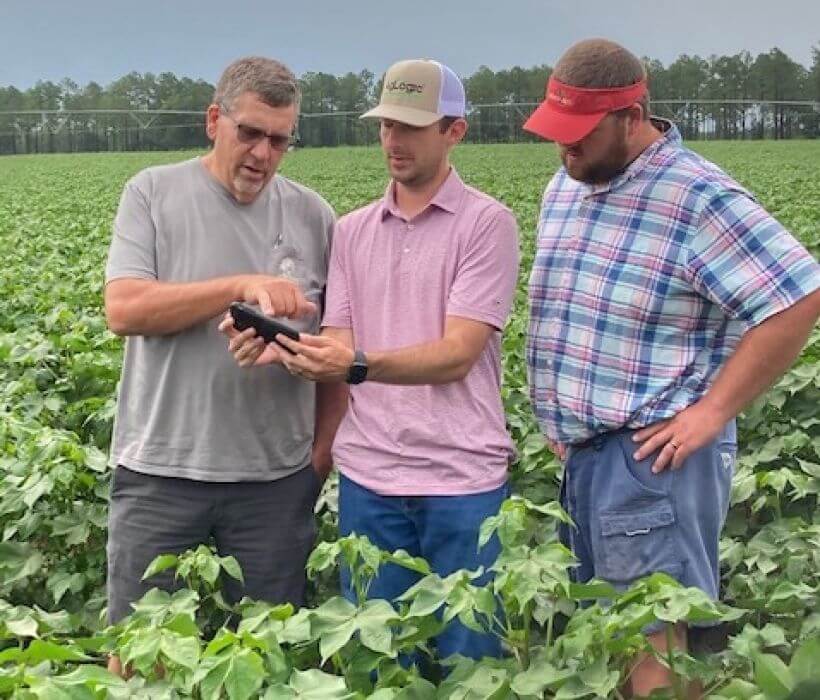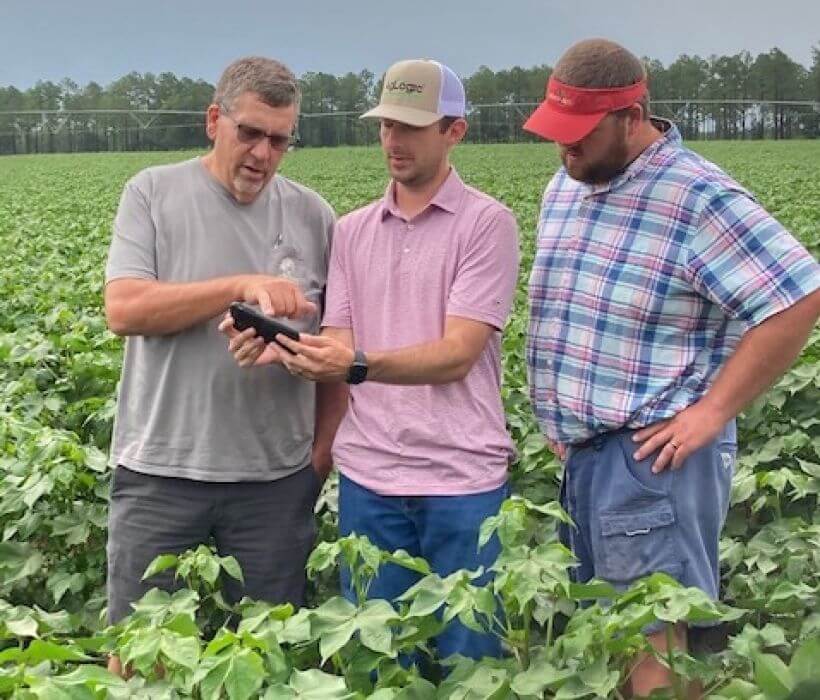
Seed Treatments vs. A More Comprehensive Option
As the 2021 season looms ever closer on the horizon, it pays to look back as always. For the next few months, growers will be carefully examining what went right and what went wrong. In many cases, their neighbors will be more than happy to tell them at the coffee shop.
One trending strategy over the past few years has been opting out of seed treatments. Although it sounds like a somewhat unusual concept in this day and age, it’s garnering attention.

“Before the days when we had dozens and dozens of seed treatment options, we were controlling thrips and nematodes without too much of a problem,” says Michael Roberts who farms with his sons Michael and Chase in Worth County, GA.
“For years, we had used Temik,” Michael says. “It was very effective on both nematodes and thrips, and we were sailing along pretty good. Of course, then the rug was jerked out from under us, and we lost Temik for several years. During that absence from the market, we were scrambling to come up with a substitute plan to get our cotton off to a good start as well as control early season pests.”
After 40 years on the market, Temik aldicarb pesticide was pulled from sales in 2010, but returned six years later as ‘AgLogic™ aldicarb’, marketed by a new company – AgLogic™ Chemical Company.
“Because aldicarb is now marketed under the name ‘AgLogic’, I don’t think some growers even know it’s back on the market,” Michael says. “They just think Temik is gone. Only the name is gone. Now it’s AgLogic. The formulation is the same.”
While there has been some initial pushback in terms of product cost, the Roberts calculate the entirety of their pest control program instead of considering only a single input.
Every input impacts another input, according to Mason. “If you get off to an early start with nematode suppression, better germination and early season thrips control, you develop a canopy faster which helps with weed control because it’s shading the rows,” he says. “A stronger plant in the beginning fights off potential problems with disease. And if you use a product that is easy on beneficials such as AgLogic, it decreases the chances of problems down the line with secondary insects. And on it goes.”
That reasoning is why the Roberts prefer to invest upfront in their cotton crop if possible rather than waiting to stamp out problems as they arise.
“We’re back to using aldicarb now that it’s available as AgLogic™ aldicarb,” Michael says. “We’re getting the same results that we did back when Temik was available.”
As for the premium price, the Roberts say it’s worth the investment. “Sure, we could buy cheaper products, but that often means sub-standard results,” Mason says. “If you go that route, then you’re fighting the battle from behind. The seed treatments can’t really compare.”
That’s where the calculations get interesting, according to the Roberts. “We don’t use treated seed,” Mason says. “We only use a base treatment. That saves us about 40 percent on a bag of seed or $13-$14 per acre by not using the seed treatments which helps offset the cost of AgLogic.”
The Roberts use 5 lbs. per acre of AgLogic™ aldicarb at planting. “Sometimes, we’ll go as high as 7 lbs. per acre of AgLogic™ if we’re dealing with fields with higher nematode populations,” Mason says. “We have a fair amount of root-knot nematode on some of our sandier soils.”
In addition to nematode suppression, early grow-off and the ever-critical thrips control, the Roberts also factor in less tangible savings such as early season spray scheduling.
“When thrips are bad – which is often – you have to hit them as early as possible if you’re relying on foliars,” Mason says. “Seed treatments don’t cut it. Resistance has been building for years, and they’re less effective now. So, if you have to spray for thrips, you have to consider how you’re going to get in the field.”
Approximately 90 percent of the Roberts’ acreage is irrigated by center pivots. Chase manages that aspect of the operation.
“You obviously can’t put a spray rig in the field if you’re irrigating it,” he says. “That’s one of the things that makes my job easier. By using AgLogic™ at planting, I don’t have to worry as much about scheduling irrigation around foliar applications. I can schedule it when the plants need the water.”
All things considered, the Roberts are pleased to have AgLogic™ back in their program. “It’s one of those products you don’t have to worry about whether or not it’s going to work,” Michael says. “The industry, the consultants and the growers have enough experience with it to know what it will do. Nothing about that has changed over the years. We think it’s worth looking at the overall picture when we’re making a decision.”